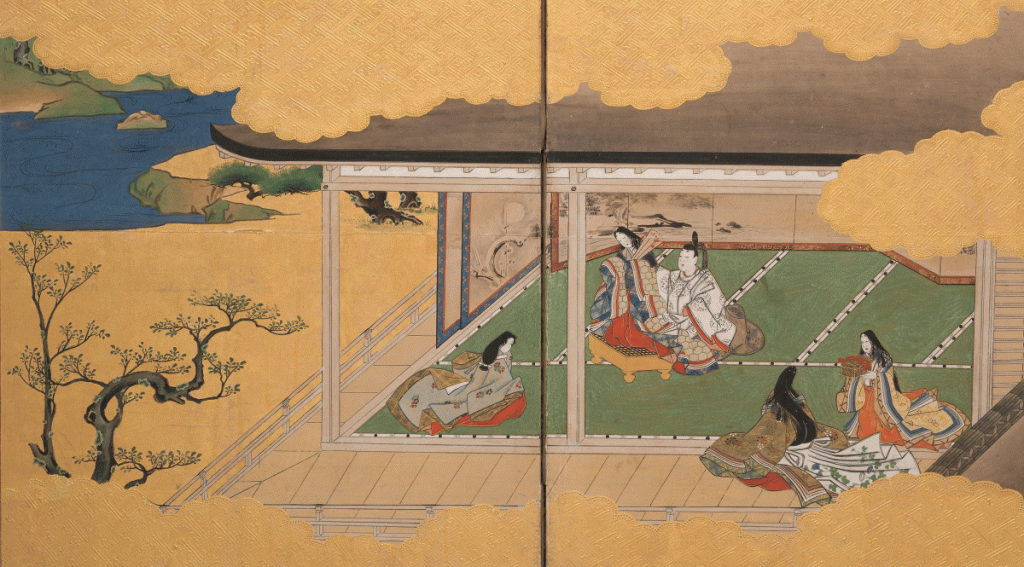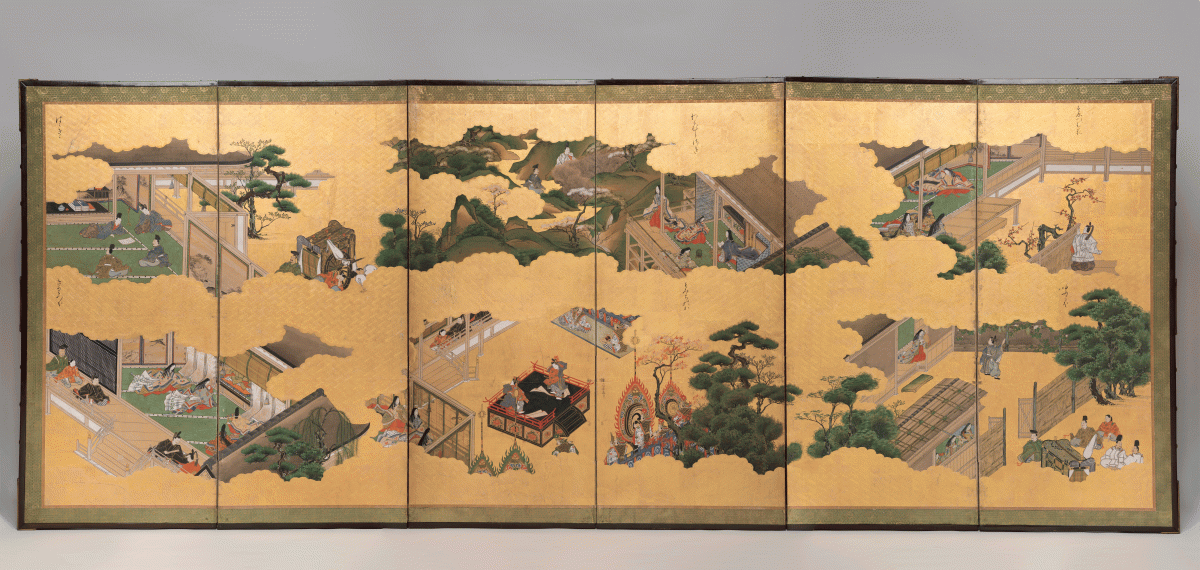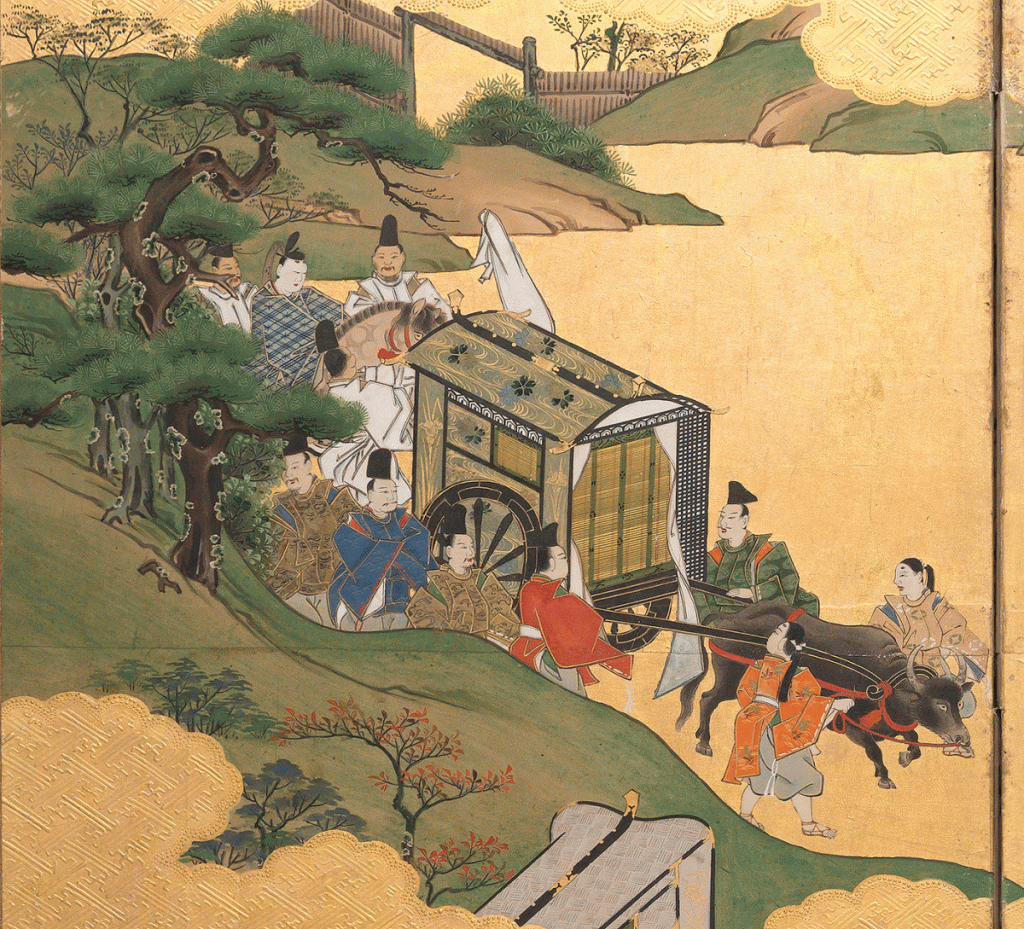
It may be “lights out” in the galleries on Mondays at the Middlebury College Museum of Art, but some works of art have not taken the day to rest.
While the museum was closed to the public on a Monday this November, a pair of 18th century Japanese screens were temporarily installed in the galleries for professional photography to document their display of finely skilled brushwork and construction. Twelve intricately painted scenes decorate these multi-paneled screens, depicting selected chapters from the Tale of Genji (Genji Monogatari), a classic literary work from Japan that was written during the 11th century.
With careful handling, both screens were brought out from storage and unwrapped in the gallery. To protect the layers of ink, color, gofun, and gold leaf from wear that could occur due to folding the screens for storage, each panel has been covered with a thin sheet of acid-free tissue. These sheets are removed, set aside, and the screen is unfolded in front of a large-scale backdrop. Standing before the photographer’s lights, two art handlers work together to stage each screen before photography and ensure that the gilded surfaces of each panel are illuminated evenly.
Left Screen:

Right Screen:

The screens stand 3 1/2 feet tall and 9 feet long when completely unfolded. In their original setting they would not always have been placed on the floor, but displayed slightly elevated on a partition between rooms or as a backdrop. The brilliance they would have added to any room survives with them today.
The brushwork implemented in the painting of these screens is so delicate that high resolution photography was an important goal of this project to capture the smallest details within each scene. These photographs will aid in the study of the screens themselves, but also serve as a resource for the literary analysis of this 11th century tale.


About the paulownia tree of the article I found more information https://greemap.es/paulownia-2/paulownia-characteristics-of-wood/?lang=en